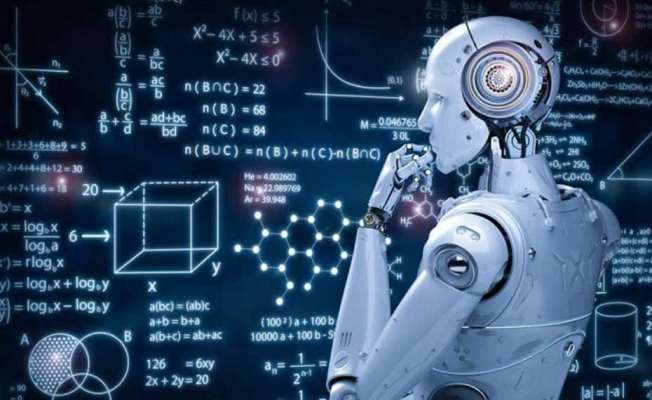In the realm of industrial progress, perhaps nothing exemplifies the fusion of human ingenuity and technological prowess more vividly than the evolution of robotics in automation. From the rudimentary mechanical arms of yesteryears to the sophisticated, AI-driven machines of today, the journey of robotics has been nothing short of transformative. Let's embark on a journey tracing the path from conceptualization to realisation in the realm of robotics and automation.
Foundations of Robotics
At its core, robotics revolves around the integration of sensors, actuators, and controllers to enable machines to perceive their environment, make decisions, and execute tasks autonomously. These foundational elements lay the groundwork for the functionality and versatility of robotic systems.
The inception of robotics can be traced back to the mid-20th century when the first industrial robots made their debut in manufacturing settings. These early machines, characterised by rigid programming and limited functionality, paved the way for subsequent advancements in robotics hardware and software.
Advancements in Hardware
The evolution of robotics hardware has been marked by a paradigm shift towards miniaturisation, lightweight materials, and enhanced durability. Modern robotic platforms leverage cutting-edge materials such as carbon fibre and titanium to achieve optimal strength-to-weight ratios, enabling unprecedented agility and manoeuvrability.
The integration of advanced sensor technologies has been instrumental in enhancing the perceptual capabilities of robots. Vision systems equipped with high-resolution cameras and depth sensors enable robots to navigate complex environments, recognize objects, and adapt to dynamic scenarios. Tactile sensors and force feedback mechanisms empower robots with the ability to interact with objects delicately and discern subtle variations in texture and pressure.
Software and Artificial Intelligence
Software plays a pivotal role in orchestrating the intricate interplay between sensors, actuators, and controllers within robotic systems. From low-level motion control algorithms to high-level task planning and optimization frameworks, software serves as the cognitive backbone that imbues robots with intelligence and autonomy.
The advent of artificial intelligence has heralded a new era in robotics, enabling machines to learn from experience, reason abstractly, and adapt to unforeseen circumstances. Machine learning algorithms, fueled by vast datasets and computational power, empower robots to perceive patterns, infer causal relationships, and make informed decisions in real-time. Cognitive computing techniques, inspired by the workings of the human brain, endow robots with the capacity for nuanced understanding, emotional intelligence, and intuitive interaction.
Applications in Industry
In the realm of manufacturing, robots have become indispensable assets, driving efficiencies in assembly, fabrication, and quality control processes. Automated production lines equipped with robotic arms and vision systems enable rapid prototyping, mass customization, and just-in-time manufacturing strategies.
In healthcare settings, robots are transforming the landscape of patient care, surgical procedures, and rehabilitation therapies. Surgical robots, equipped with precision instruments and augmented reality interfaces, enable surgeons to perform minimally invasive procedures with unparalleled precision and dexterity. Rehabilitation robots assist patients in regaining mobility and motor function following injuries or neurological disorders, fostering faster recovery and improved outcomes.
The logistics and warehousing industry has witnessed a paradigm shift with the advent of robotics-driven automation solutions. Automated Guided Vehicles (AGVs) navigate warehouse environments autonomously, transporting goods efficiently and optimising inventory management processes. Warehouse robotics automation systems leverage robotic arms, conveyor belts, and sorting algorithms to streamline order fulfilment, minimise errors, and enhance throughput rates.
Challenges and Ethical Considerations
The complexity of robotics systems poses formidable technical challenges related to sensing, perception, and human-robot interaction. Achieving robustness in sensing capabilities, ensuring seamless integration with existing infrastructure, and addressing safety concerns remain paramount priorities for researchers and engineers alike.
The proliferation of robotics in automation raises profound ethical questions regarding job displacement, economic inequality, and societal well-being. As automation disrupts traditional labour markets and reshapes occupational landscapes, policymakers, industry stakeholders, and ethicists must collaborate to ensure equitable distribution of benefits and mitigate adverse consequences.
Future Trends and Innovations
The integration of robotics with emerging technologies such as the Internet of Things (IoT) and 5G connectivity promises to unlock new realms of connectivity, scalability, and real-time responsiveness. By harnessing the power of interconnected ecosystems and distributed intelligence, robotic systems can transcend conventional boundaries and usher in a new era of pervasive automation.
The evolution of human-robot interaction represents a pivotal frontier in robotics research and development. As robots transition from mere tools to collaborative partners and companions, the emphasis shifts towards imbuing machines with empathy, social awareness, and ethical discernment. By fostering symbiotic relationships between humans and robots, we can harness the full potential of automation while preserving the dignity, autonomy, and well-being of all stakeholders.
Conclusion
In conclusion, the evolution of robotics in automation epitomises humanity's quest for progress, innovation, and societal transformation. From humble beginnings to soaring aspirations, the journey of robotics is a testament to the indomitable spirit of human creativity and ingenuity. As we chart a course towards an increasingly automated future, let us embrace the opportunities, navigate the challenges, and strive to build a world where technology serves as a catalyst for human flourishing and collective well-being.

 B:SM will break its investment record this year with 62 million euros
B:SM will break its investment record this year with 62 million euros War in Ukraine: when kyiv attacks Russia with inflatable balloons loaded with explosives
War in Ukraine: when kyiv attacks Russia with inflatable balloons loaded with explosives United States: divided on the question of presidential immunity, the Supreme Court offers respite to Trump
United States: divided on the question of presidential immunity, the Supreme Court offers respite to Trump Maurizio Molinari: “the Scurati affair, a European injury”
Maurizio Molinari: “the Scurati affair, a European injury” First three cases of “native” cholera confirmed in Mayotte
First three cases of “native” cholera confirmed in Mayotte Meningitis: compulsory vaccination for babies will be extended in 2025
Meningitis: compulsory vaccination for babies will be extended in 2025 Spain is the country in the European Union with the most overqualified workers for their jobs
Spain is the country in the European Union with the most overqualified workers for their jobs Parvovirus alert, the “fifth disease” of children which has already caused the death of five babies in 2024
Parvovirus alert, the “fifth disease” of children which has already caused the death of five babies in 2024 Inflation rebounds in March in the United States, a few days before the Fed meeting
Inflation rebounds in March in the United States, a few days before the Fed meeting Video games: Blizzard cancels Blizzcon 2024, its annual high mass
Video games: Blizzard cancels Blizzcon 2024, its annual high mass Falling wings of the Moulin Rouge: who will pay for the repairs?
Falling wings of the Moulin Rouge: who will pay for the repairs? “You don’t sell a company like that”: Roland Lescure “annoyed” by the prospect of a sale of Biogaran
“You don’t sell a company like that”: Roland Lescure “annoyed” by the prospect of a sale of Biogaran Exhibition: in Deauville, Zao Wou-Ki, beauty in all things
Exhibition: in Deauville, Zao Wou-Ki, beauty in all things Dak’art, the most important biennial of African art, postponed due to lack of funding
Dak’art, the most important biennial of African art, postponed due to lack of funding In Deadpool and Wolverine, Ryan and Hugh Jackman explore the depths of the Marvel multiverse
In Deadpool and Wolverine, Ryan and Hugh Jackman explore the depths of the Marvel multiverse Tom Cruise returns to Paris for the filming of Mission Impossible 8
Tom Cruise returns to Paris for the filming of Mission Impossible 8 Skoda Kodiaq 2024: a 'beast' plug-in hybrid SUV
Skoda Kodiaq 2024: a 'beast' plug-in hybrid SUV Tesla launches a new Model Y with 600 km of autonomy at a "more accessible price"
Tesla launches a new Model Y with 600 km of autonomy at a "more accessible price" The 10 best-selling cars in March 2024 in Spain: sales fall due to Easter
The 10 best-selling cars in March 2024 in Spain: sales fall due to Easter A private jet company buys more than 100 flying cars
A private jet company buys more than 100 flying cars This is how housing prices have changed in Spain in the last decade
This is how housing prices have changed in Spain in the last decade The home mortgage firm drops 10% in January and interest soars to 3.46%
The home mortgage firm drops 10% in January and interest soars to 3.46% The jewel of the Rocío de Nagüeles urbanization: a dream villa in Marbella
The jewel of the Rocío de Nagüeles urbanization: a dream villa in Marbella Rental prices grow by 7.3% in February: where does it go up and where does it go down?
Rental prices grow by 7.3% in February: where does it go up and where does it go down? Even on a mission for NATO, the Charles-de-Gaulle remains under French control, Lecornu responds to Mélenchon
Even on a mission for NATO, the Charles-de-Gaulle remains under French control, Lecornu responds to Mélenchon “Deadly Europe”, “economic decline”, immigration… What to remember from Emmanuel Macron’s speech at the Sorbonne
“Deadly Europe”, “economic decline”, immigration… What to remember from Emmanuel Macron’s speech at the Sorbonne Sale of Biogaran: The Republicans write to Emmanuel Macron
Sale of Biogaran: The Republicans write to Emmanuel Macron Europeans: “All those who claim that we don’t need Europe are liars”, criticizes Bayrou
Europeans: “All those who claim that we don’t need Europe are liars”, criticizes Bayrou These French cities that will boycott the World Cup in Qatar
These French cities that will boycott the World Cup in Qatar Euroleague: at the end of the suspense, Monaco equalizes against Fenerbahçe
Euroleague: at the end of the suspense, Monaco equalizes against Fenerbahçe Women's Six Nations: Where to see and five things to know about France-England
Women's Six Nations: Where to see and five things to know about France-England Liverpool: it is confirmed, Slot will succeed Klopp on the Reds bench
Liverpool: it is confirmed, Slot will succeed Klopp on the Reds bench Ligue 1: Montpellier and Nantes back to back, two reds in stoppage time
Ligue 1: Montpellier and Nantes back to back, two reds in stoppage time


















